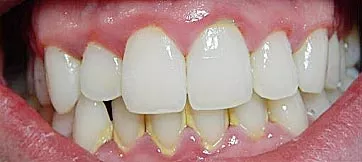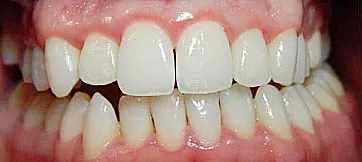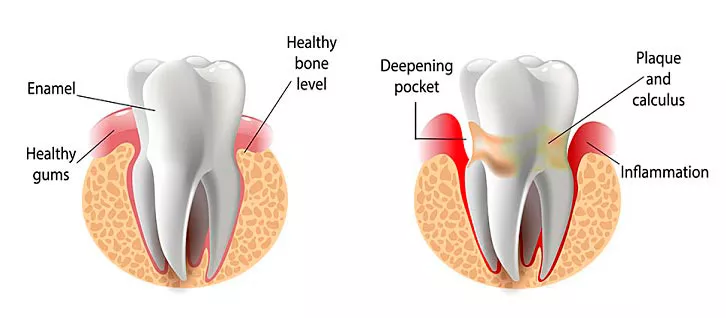Gum Treatments & Laser Therapies – Healthier Gums for Better Smiles

What to Expect ?
Dental issues and oral hygiene are very important but are often neglected. Proper dental care is not just limited to taking care of your teeth but also caring about the gums holding your teeth intact, especially because it is one of the foremost causes of tooth loss.
There exist several dental therapies and both surgical and non-surgical treatments for gum diseases like scaling and Deep Gingival Curettage (DGC), depending on the type, intensity and stage of trouble a patient is facing as well as their previous medical records such as how they responded to earlier treatments (if any), or if they are allergic to a certain medication, or their overall health.
After a thorough and in-depth examination of one’s gum health and in-depth analysis of previous medical records, treatment is recommended ranging from non-surgical therapies to surgical procedures. Non-surgical approaches control the growth of bacteria, tartar and effectively reverses it. Surgical procedures focus on restoring the gum tissues surrounding and supporting the teeth such that tooth loss is prevented.
The approaches of conventional treatment of gum disease, more often than not leading to surgery for patients – has been changing rapidly in recent years with development in the world of dentistry. If a condition is detected early and if proper treatment is carried out soon enough, surgery can be avoided in almost all cases.
But in cases of late detection or unavoidable conditions, minimally invasive surgical procedures are advisable as well as a necessity as it guarantees the best results possible for dental and oral health.


Call Us
080 55440120
OR
Book an Appointment
Gum Diseases and Treatments – Flap Surgery or Periodontal Surgery
When an advanced gum disease such as periodontitis develops, the risks of teeth loss increase by many folds as ligaments and the bone tissues that surround teeth are on the verge of being destroyed. If this disease cannot be controlled using simple procedures such as scaling and cleaning or i moderate cases, a deep gingival curettage, flap surgery is the next best option.
Flap surgery describes the most commonly used approach to plastic surgical repair of periodontal “pockets”. “Pockets” are areas below the gum line formed due to the detachment of tissue attached to the teeth resulting in an uncleanable space serving as an ideal environment for bacterias to survive. The formation of bacteria results in said inflammation, sensitivity and even bleeding and severe pain.
The biggest objective of flap surgery is to reduce the pocket itself such that bacterias cannot thrive. Procedurally, an incision shaped like a flap is made in the gum tissue. Diseased tissues are removed from the pocket, and the flap also provides easy access to the teeth’s root surfaces for a thorough cleaning, thus eliminating harmful plaque and calculus (tartar). On completion of the procedures, the “flap” is closed surgically, thus sealing the area. The healing process begins promptly and takes place rapidly.

Gum Diseases and Treatments – Gum Bleaching (Gum Depigmentation)
Gum pigmentation is generally caused by melanin. It is a naturally occurring substance in our body responsible for producing colour that we find in freckles, sun spots or age spots. It is responsible for making you tan in the summertime. But unfortunately, some people have an overproduction of melanin in their gums resulting in pigmentation.
Chances are that you have already heard of teeth whitening and bleaching, but have you heard of gingival depigmentation or gum bleaching? It is just a fancy name for the removal of those brown or black spots. The end results are gums that look perfectly healthy and have a natural colour all across them.
There exist numerous methods of gum bleaching that have been developed to do this. Gum bleaching or lightening can be done using a whitening solution with a microdermabrasion process, or with a laser. Microdermabrasion is the more traditional process and takes about an hour to complete.
Both the methods gently and safely remove the superficial layer of pigmented tissue revealing the non-pigmented ones below. Local anaesthesia is done to prevent any discomfort during the entire procedure. The process is completely safe and gives instant results on the very same day.
Laser Dentistry
Laser dentistry is the use of lasers to treat a number of different dental conditions. It became commercially used in clinical dental practice for procedures involving tooth tissue in 1989.
Laser dentistry potentially offers a more comfortable treatment option for a number of dental procedures involving hard or soft tissue compared to drills and other non-laser tools.
LASER stands for “light amplification by the stimulated emission of radiation.” The instrument creates light energy in a very narrow and focused beam. This laser light produces a reaction when it hits tissue, allowing it to remove or shape the tissue.
Laser dentistry is used in a variety of procedures, including:
- treating hypersensitivity
- treating tooth decay
- treating gum disease
- whitening teeth
Lasers can make dental treatments more efficient, cost effective, and comfortable. The Food and Drug Administration (FDA) has approved laser dentistry as a treatment option for several dental conditions.
Benefits of using Laser Dentistry over Other Methods
- There is potentially a decreased need for sutures with soft tissue lasers.
- Bleeding is minimized in treated soft tissues, as the laser promotes blood clotting.
- With some procedures, anesthesia is unnecessary.
- The chance for bacterial infections is lower because the laser sterilizes the area.
- Wounds can heal faster, and it’s possible for tissue to regenerate.
- The procedures may involve less damage to the surrounding tissues.

